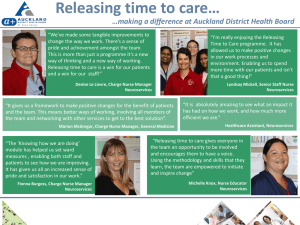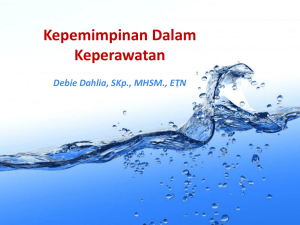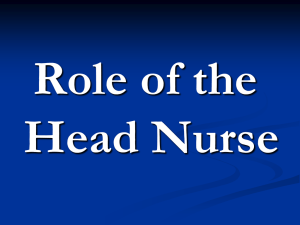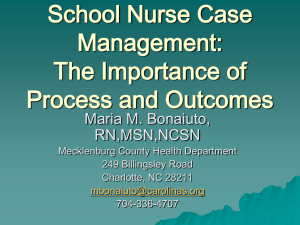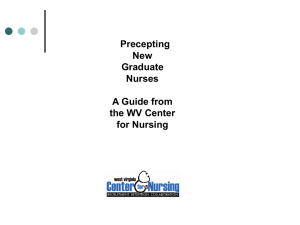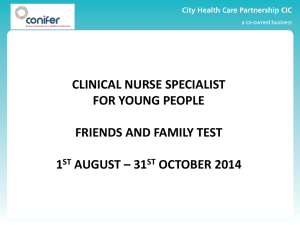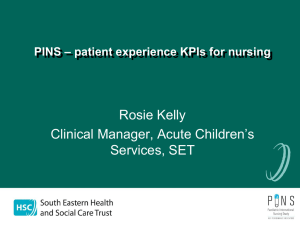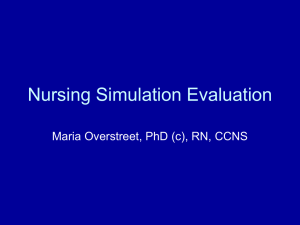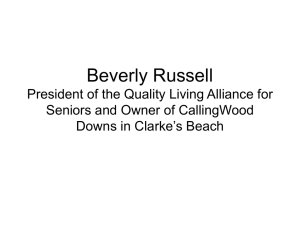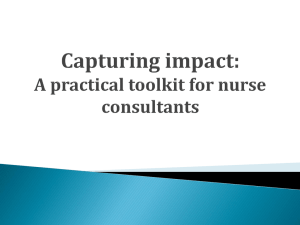The_Bucket_List
advertisement
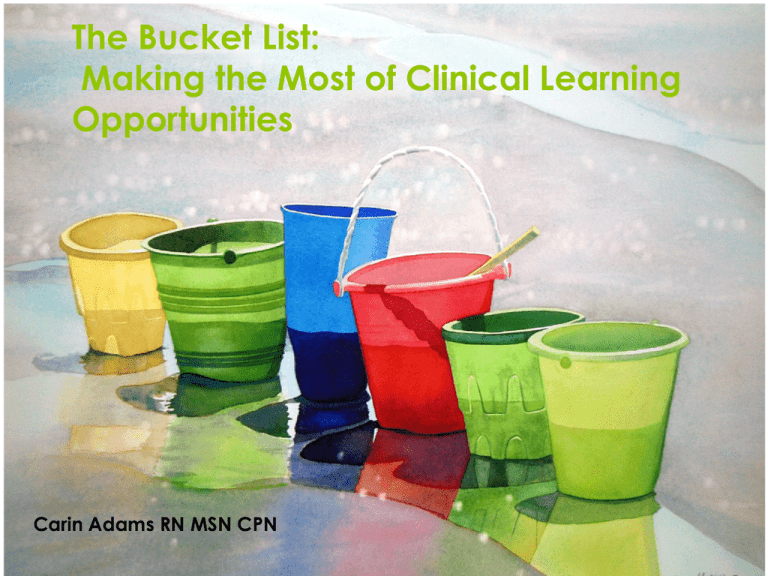
The Bucket List: Making the Most of Clinical Learning Opportunities Carin Adams RN MSN CPN Clinical Placements Traditional clinical experiences Acute care hospital Long term acute care facilities/ nursing homes Placement barriers availability (128 hours and no where to go) Faculty to student ratio Experiential Learning A philosophy developed by David A. Kolb Educators purposefully engage with learners in direct experience and focused reflection in order to increase knowledge, develop skills, clarify values, and develop people's capacity to contribute to their communities. Experiential Learning The learner must be willing to be actively involved in the experience The learner must be able to reflect on the experience The learner must use analytical skills to conceptualize the experience The learner must possess decision making and problem solving skills in order to use the new ideas gained from the experience. Experiential Learning Experiential Learning Simulation Clinical simulations in nursing can be used to immerse the student in the hospital environment and the role of the bedside nurse. Simulation allows students to experience the application of theory in a safe environment where mistakes can be made without risk to the patient (Billings and Halstead 2012) Experiential Learning Simulation Evaluation of simulation experience Debriefing - The role of faculty is to support participants in reflection. What do you think about your performance? What would you have done differently? How did that make you feel? http://www2.sunysuffolk.edu/winstah/SIM/D ebriefing.pdf Experiential Learning Simulation Clinical Reasoning Scenarios Electronic Documentation Med pass simulation Virtual simulation – second life Problem based learning Students were given a disease process Researched the pathology, signs and symptoms Created a patient for the whole group to assess Service Learning develops values, cultural competence, social responsibility Private schools Child assessment: height, weight, growth chart Vital signs – BP norms Hearing and Vision Scoliosis Acanthosis nigricans Student pre-work reading assignments Service Learning Developmental Clinic Student experience role of pediatric nurse Environment of safety HIPPA/FERPA Patient identification Anticipatory guidance Medication safety- Coloring books www.poisoncontrol.org Evaluation Direct observation Vision and Hearing Certification Students certified to perform state required hearing and vision screens for school age children in the state of Texas. Certification Purchased good for 5 years 2 audiometers http://www.dshs.state.tx.us/vhs/default.shtm School Nurse Experience Collaboration between four ISD’s Nurse Health Service Coordinators and faculty created student nurse preceptor program Students mentored by the same nurse for 3 (8 hour) “shifts” Students can assist nurse with vision and hearing screenings. Preceptors Clinical preceptors may be used to enhance clinical learning experiences within a course after a student has received clinical and didactic instruction in the basic areas of nursing for that course or specific learning experience. http://www.bon.texas.gov/nursingeducati on/faq_clinical.html School Nurse Experience Students pre-clinical assignment – Role of the school nurse Selected chapters from School Nursing: A Comprehensive Text [Janice Selekman] ISBN10: 0803622090 Evaluation: report from precepting nurse Timeliness Phone calls Reflective summary excepts School Nurse Experience Preceptor incentives http://www.collegeforalltexans.com/apps /financialaid/tofa2.cfm?ID=546 BON regulations regarding preceptors http://info.sos.state.tx.us/pls/pub/readtac $ext.ViewTAC?tac_view=4&ti=22&pt=11& ch=215&rl=Y Anticipatory Guidance Students use skills that reflect college core Writing and public speaking Nursing objectives - recognizing and using evidenced based practice (EBP). Role- Pediatric nurse: teaching of children and families. http://www.safekids.org/ Delivery- Health fairs, PTA’s Evaluation- group rubric Was information Evidenced Based Immersion learning Kinderfrogs Child study center ABA therapy Evaluation – reflective summary Your turn Please take a few minutes to discuss experiential learning in your clinical environments. Please write down your experiences. Opportunity for sharing Now share your bucket list! Please write down your name & email address on your piece of paper and drop it in our buckets. I will go through and compile a list of your ideas and distribute to all of us via email. Thank you for your time and attention and enjoy the rest of your conference.
